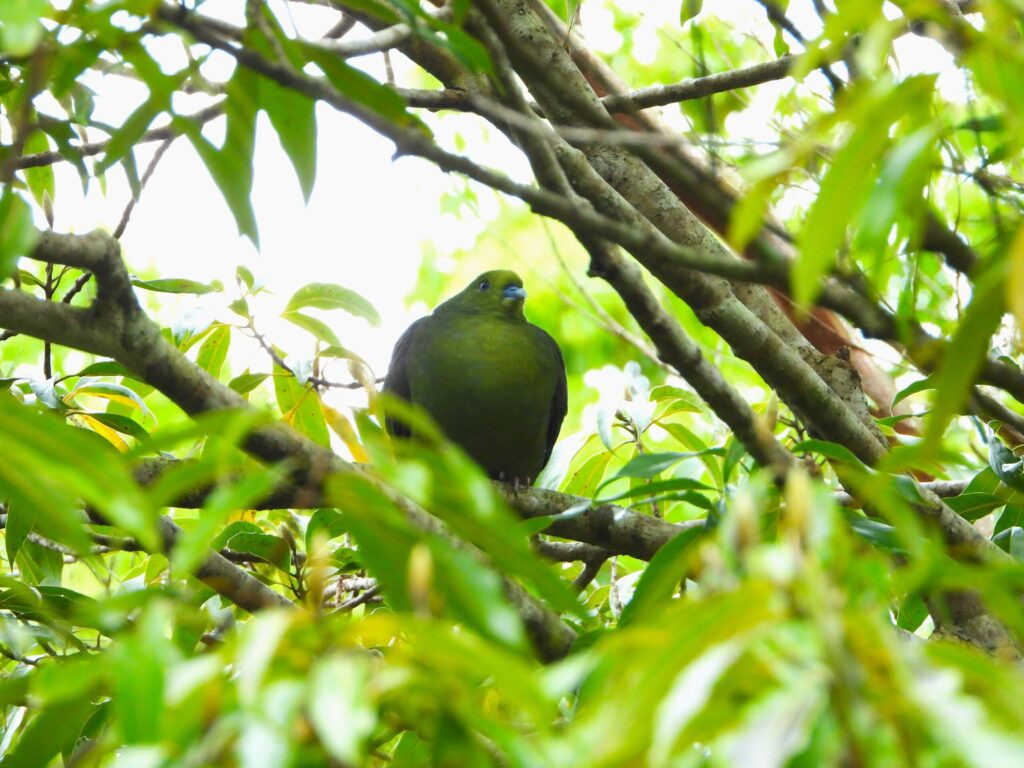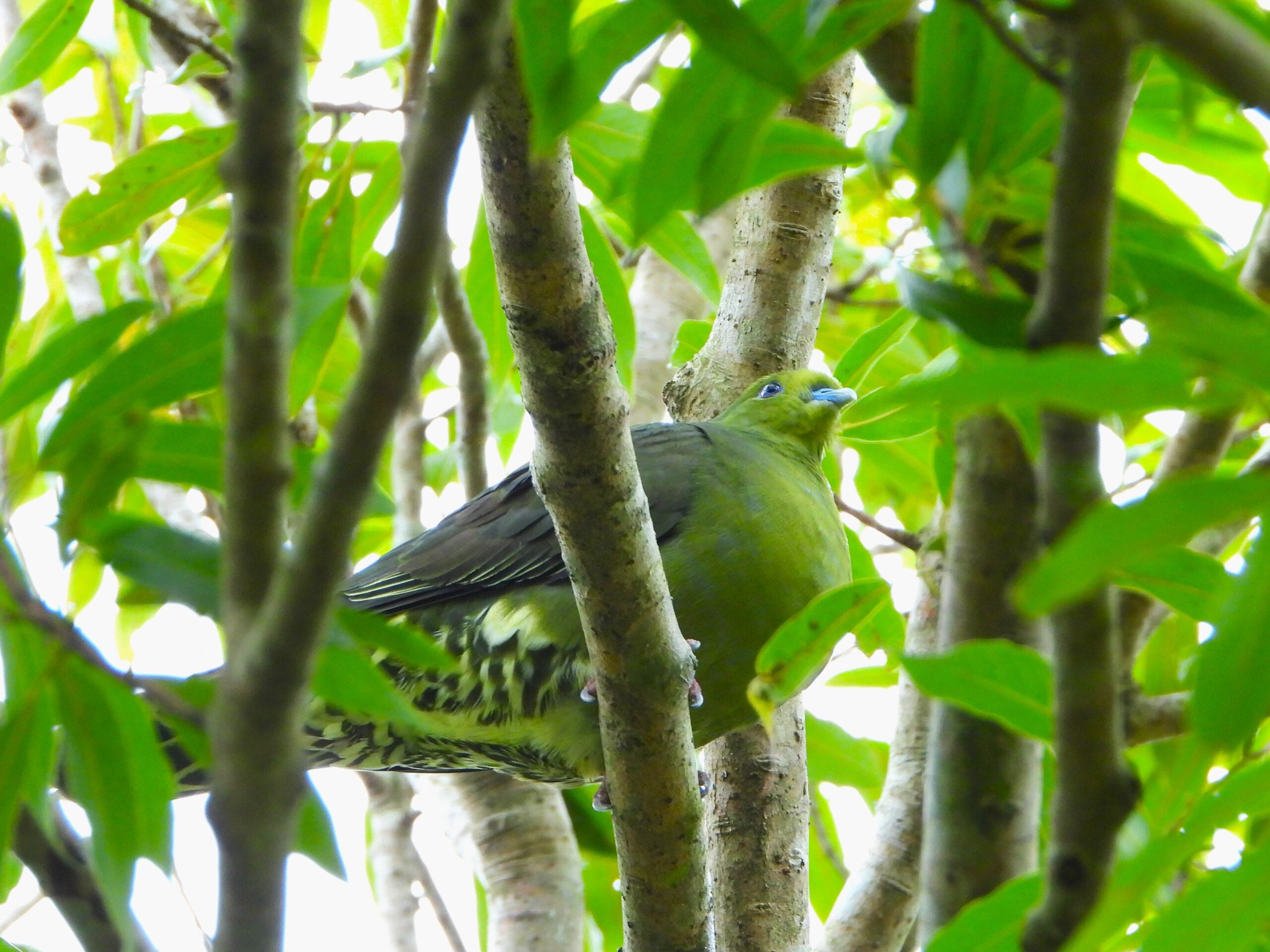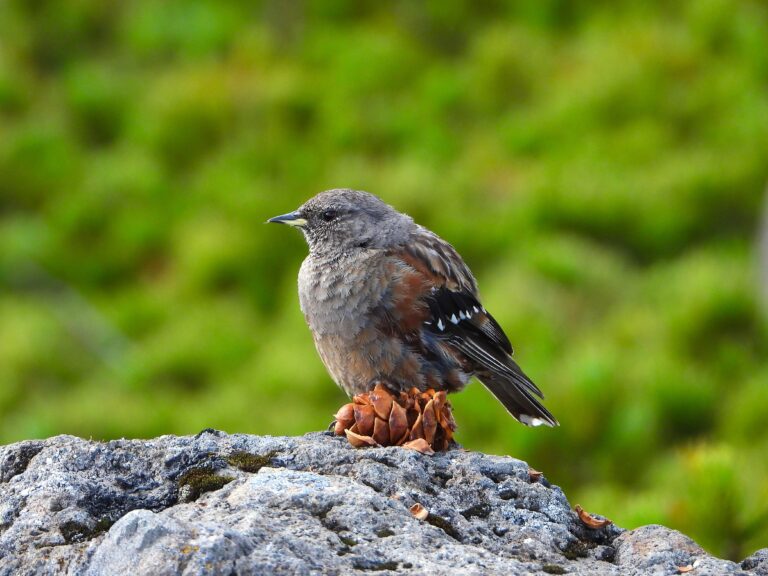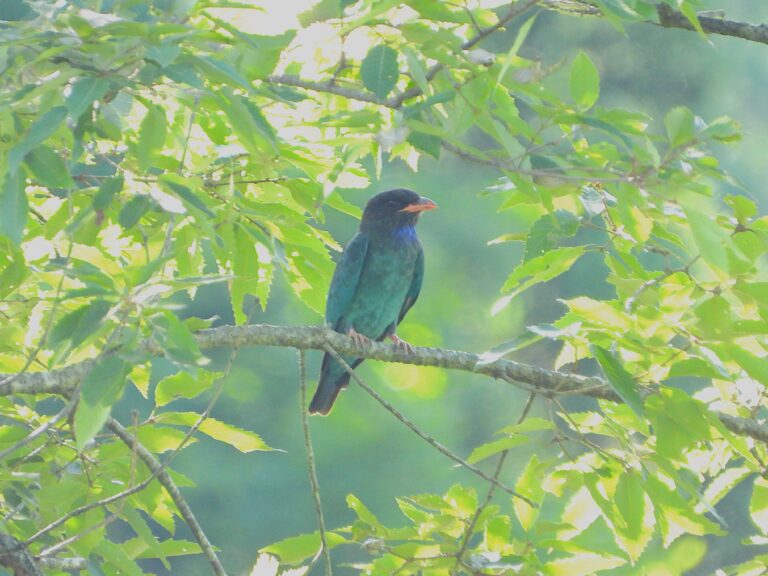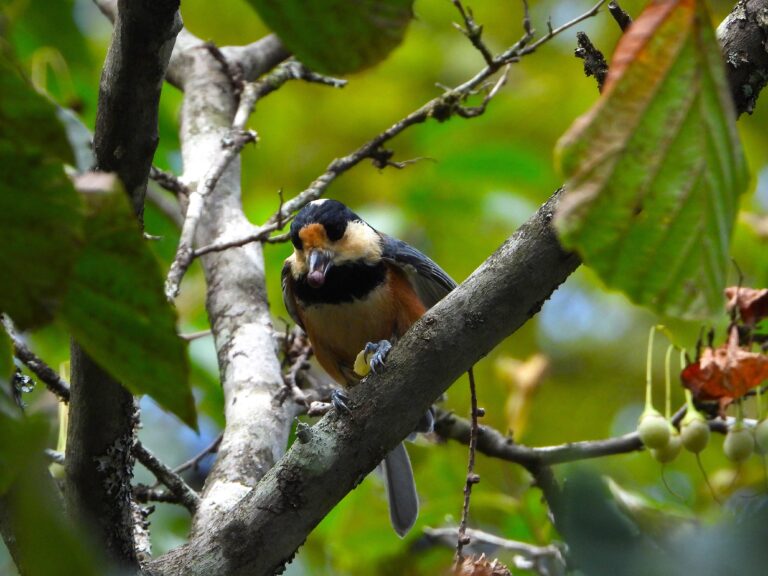Whistling Green Pigeon (Treron formosae) – Wildlife of Japan
Introduction
The Whistling Green Pigeon, known in Japanese as Zuaka Aobato, is a beautiful green pigeon inhabiting Japan’s southern islands. Its name means “red-headed green pigeon,” a reference to the Taiwanese form that has a reddish crown, though individuals in Japan usually lack this feature. Its emerald plumage and soft, flute-like call echo through the subtropical forests, making it one of the most distinctive birds of the Ryukyu Archipelago.
Appearance
This pigeon measures around 33–35 cm in length. The plumage is mainly green, blending perfectly into the forest canopy.
The head and underparts are bright green; the wings are darker with olive tones, and the tail underside is grayish with pale edges. The eyes are red and the bill bluish-gray.
The nominate subspecies T. f. formosae occurs in Taiwan, while the Japanese population (T. f. permagnus) is all-green and endemic to the Nansei Islands.
Habitat & Distribution
The Whistling Green Pigeon inhabits evergreen broadleaf forests in the Nansei Islands, including Amami Ōshima, Tokunoshima, Okinawa, Miyako, and the Yaeyama Islands.
It is resident (non-migratory) and strongly tied to forest interiors where fruiting trees are abundant.
Unlike the more northern Japanese Green Pigeon, this species does not occur on mainland Honshū or Hokkaidō.
Where to See in Japan
The species can be encountered in:
- Amami Ōshima – forested valleys in Sumiyo and Tatsugō.
- Okinawa Main Island – Kunigami Forest Park and Yambaru National Park.
- Iriomote Island – subtropical forests along rivers and forest roads.
It is far easier to hear than to see; its flute-like “poo-pepoo-pepoo” call often resonates through the canopy at dawn.
Behavior
This pigeon spends most of its life high in the canopy, feeding quietly and calling softly. It is shy and seldom descends to the ground.
Its call resembles a mellow whistle, sometimes compared to a shakuhachi flute.
Individuals or small groups are usually observed; they perch on branches or fruiting trees and rarely show aggressive behavior.
Diet
The Whistling Green Pigeon is strictly frugivorous, feeding on fruits of figs and other forest trees.
It plays an important role in seed dispersal within subtropical forests.
Unlike the Japanese Green Pigeon (Treron sieboldii), which famously drinks seawater for minerals, this species shows no record of seawater drinking and is considered a purely forest-dwelling feeder.
Reproduction
Detailed studies in Japan are limited, but like its relatives, it likely builds a simple twig platform nest on tree branches.
The breeding season is estimated from April to July, and the clutch consists of two white eggs, as in other Treron species.
Both parents likely share incubation duties.
Conservation
The Whistling Green Pigeon is endemic to the southern Japanese islands and nearby Taiwan.
Although not globally threatened, its limited range makes it vulnerable to deforestation and predation by introduced species such as rats and feral cats.
Maintaining large, intact evergreen forests is vital for its continued survival.
Author’s Impression
I encountered the Whistling Green Pigeon on Amami Ōshima — truly by chance.
When I happened to look up, it was quietly resting on a branch above me.
Its green plumage blended so perfectly with the leaves that I almost missed it.
If you ever explore these subtropical forests, look carefully — this beautiful bird may be right above you, hidden among the foliage.
